Abstract
Sialic acids present on luminal surfaces of vascular endothelium were determined by perfusing neuraminidase free of proteolytic activity through carotid arteries, iliac arteries and jugular veins of anaesthetized rabbits and guinea-pigs and through human umbilical veins. Total sialic acids released in I h from arteries and veins, determined fluorimetrically, were 24-51 X 10(6) molecules/micron 2 endothelial surface; this was more, by up to two orders of magnitude, than sialic acids releasable by neuraminidase from other types of cells, i.e. from 0.15 X 10(6) for human erythrocytes to 15 X 10(6) for human platelets. Sialic acids therefore provide extraordinarily high negative charge densities on vascular surfaces exposed to the flowing blood. As all circulating cells are also negatively charged, strong electrostatic repulsion must exist between them and normal vessel walls. These observations can therefore account for the general property of non-adherence of circulating cells in normal blood vessels of which the so-called 'non-thrombogenicity', meaning the non-adherence of platelets to normal vascular endothelium, is one example. It is suggested that a major biological function of these extraordinarily high negative charge concentrations is the mutual repulsion between endothelial surfaces and blood cells which promotes their unimpeded circulation.
Full text
PDF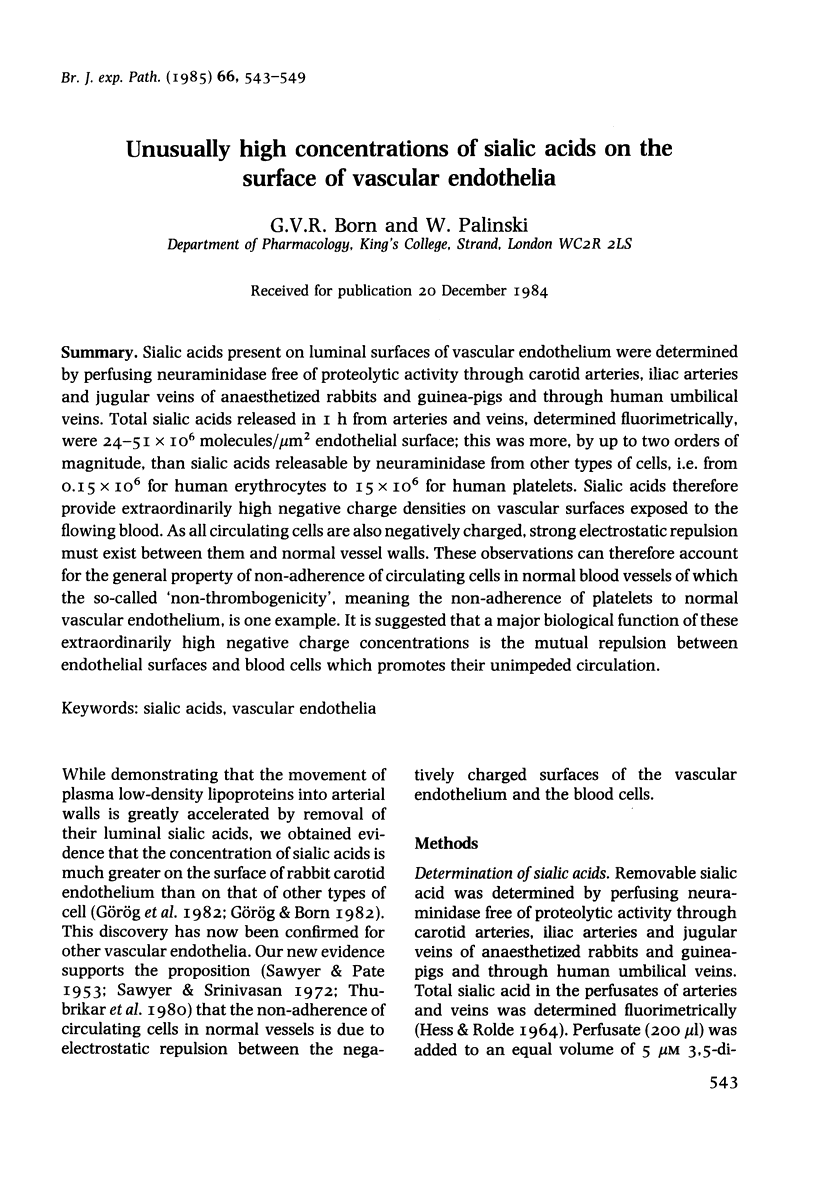
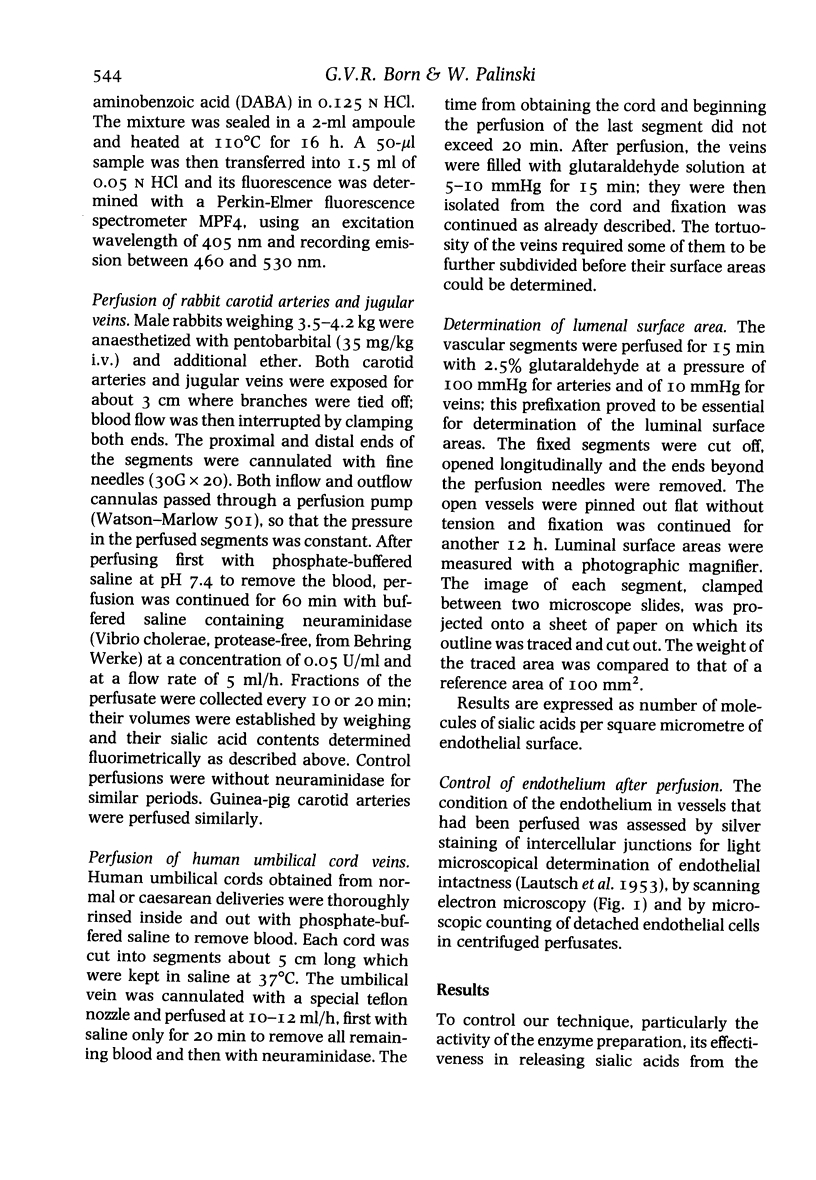
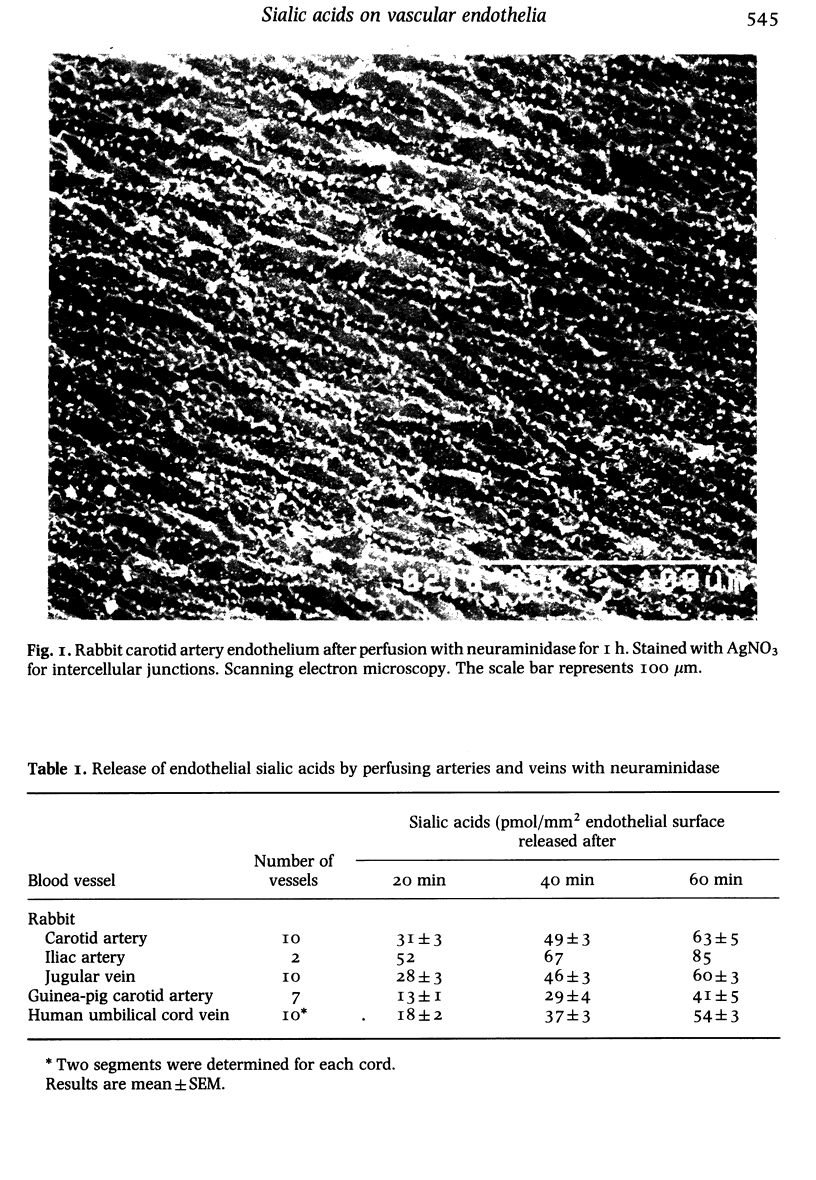
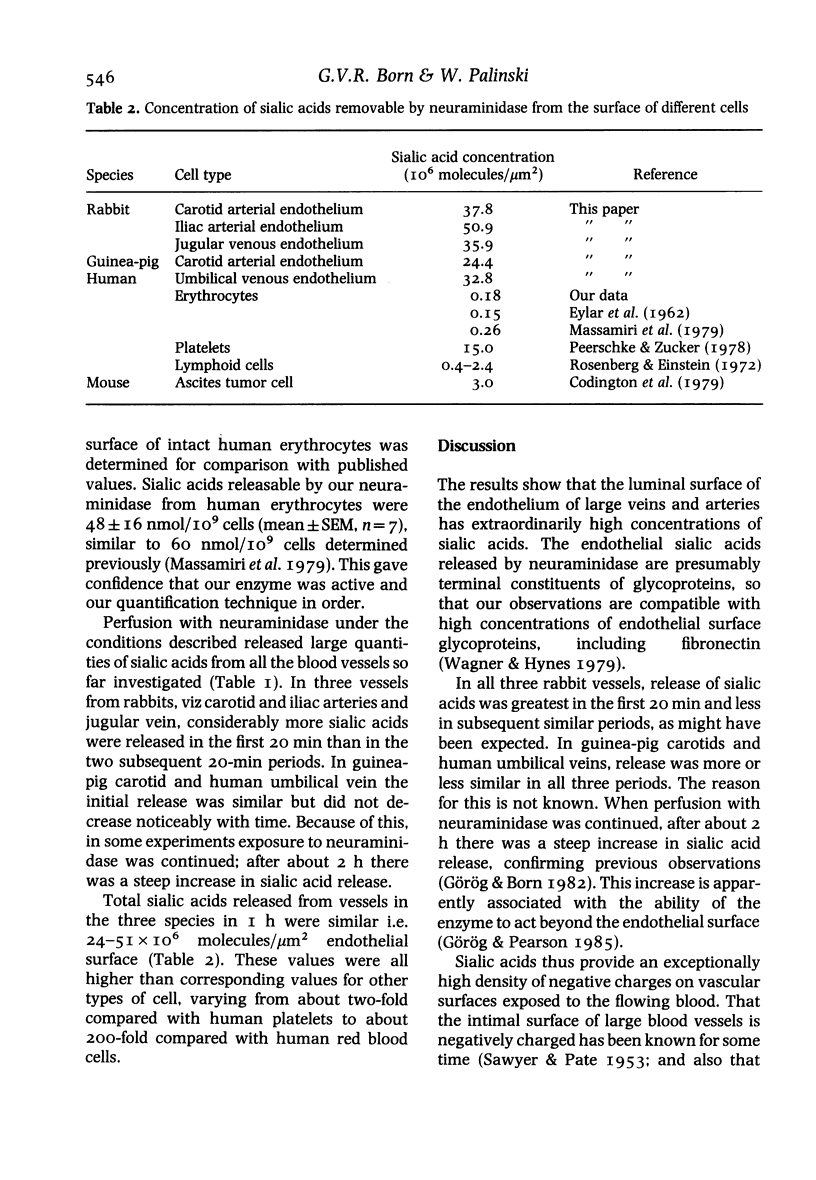
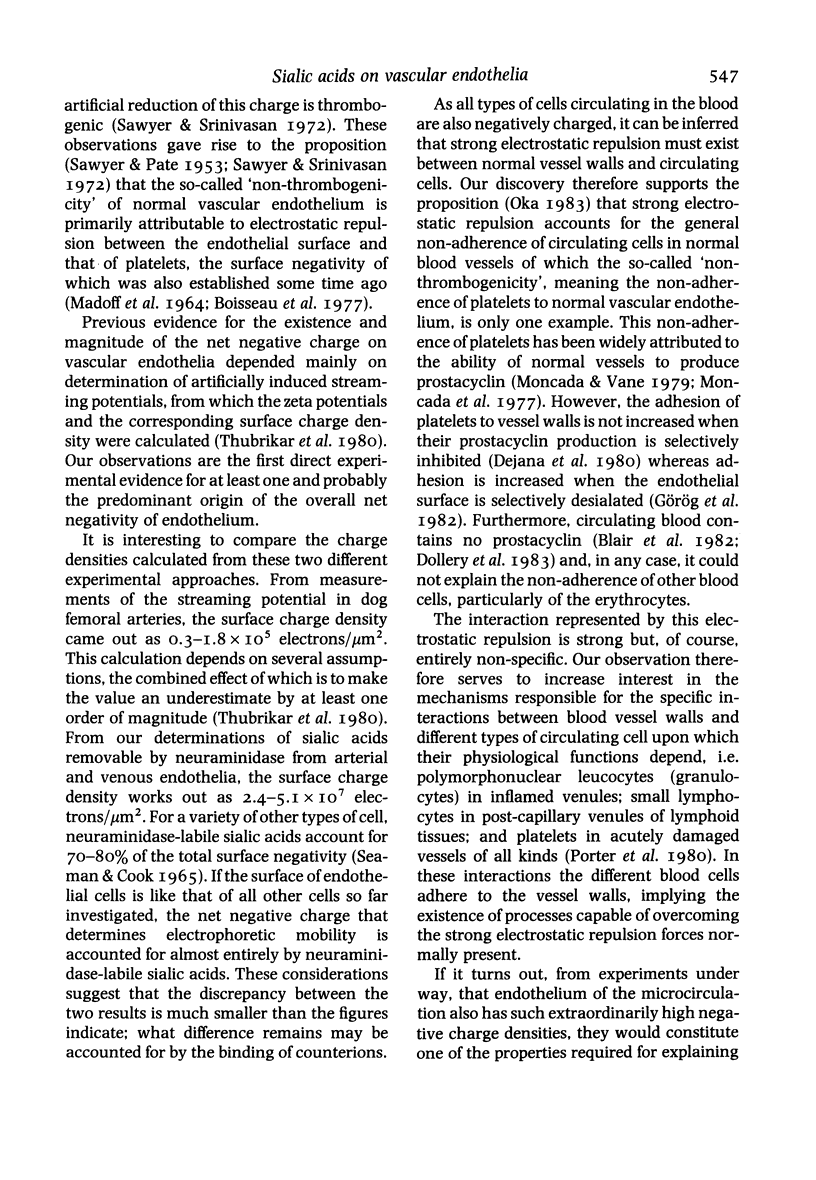
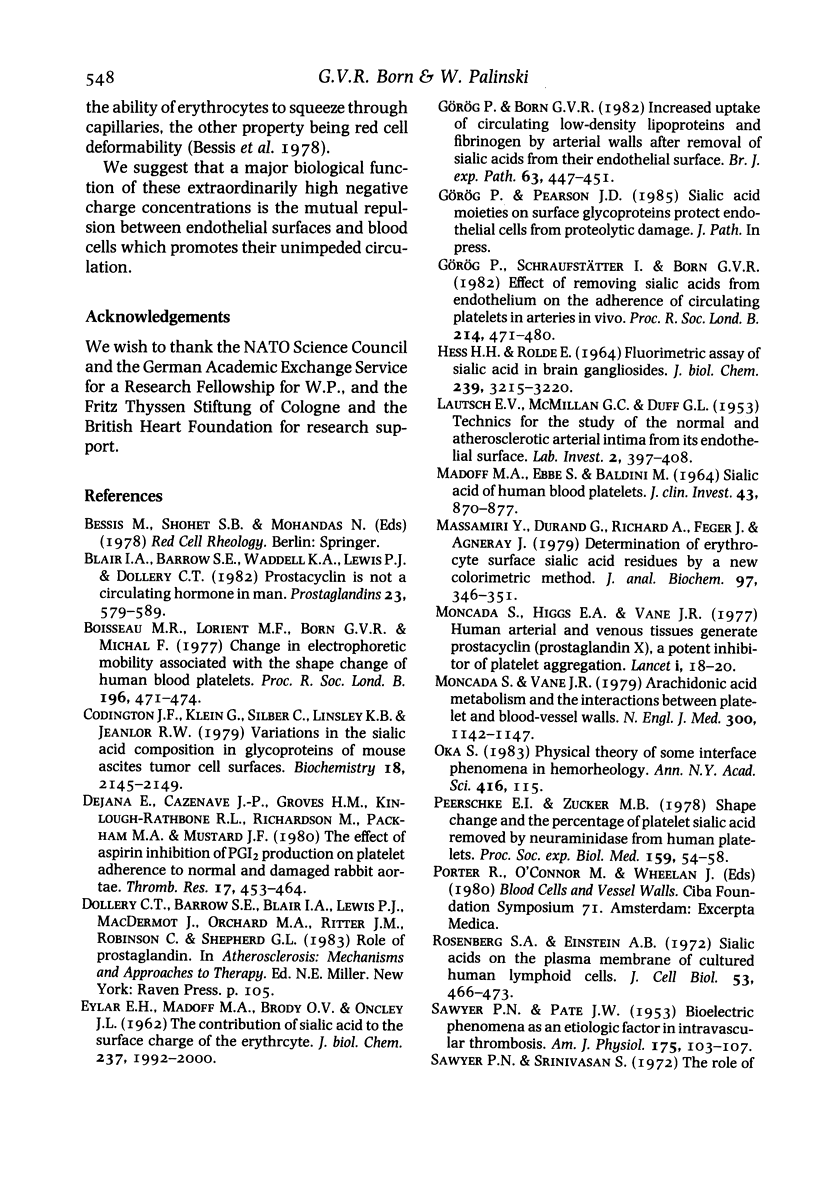
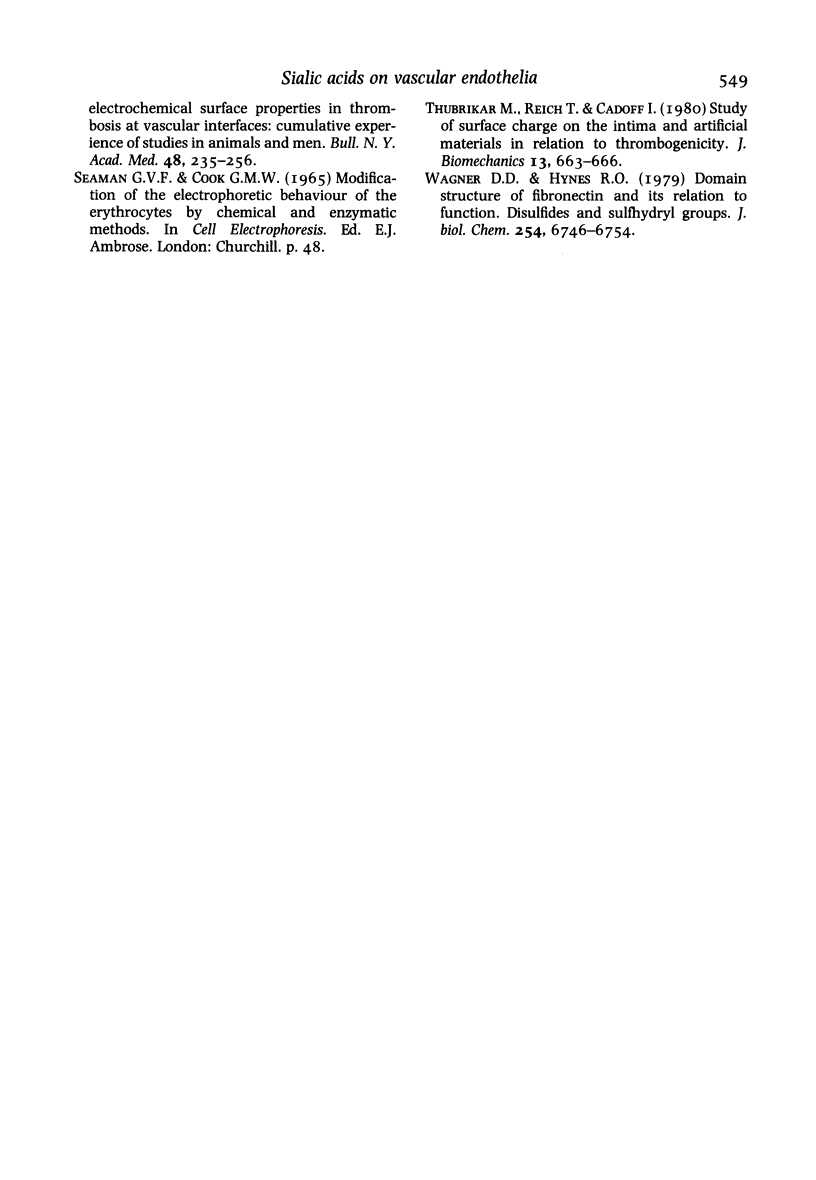
Images in this article
Selected References
These references are in PubMed. This may not be the complete list of references from this article.
- Dejana E., Cazenave J. P., Groves H. M., Kinlough-Rathbone R. L., Richardson M., Packham M. A., Mustard J. F. The effect of aspirin inhibition of PGI2 production on platelet adherence to normal and damaged rabbit aortae. Thromb Res. 1980 Feb 1;17(3-4):453–464. doi: 10.1016/0049-3848(80)90080-8. [DOI] [PubMed] [Google Scholar]
- EYLAR E. H., MADOFF M. A., BRODY O. V., ONCLEY J. L. The contribution of sialic acid to the surface charge of the erythrocyte. J Biol Chem. 1962 Jun;237:1992–2000. [PubMed] [Google Scholar]
- Görög P., Born G. V. Increased uptake of circulating low-density lipoproteins and fibrinogen by arterial walls after removal of sialic acids from their endothelial surface. Br J Exp Pathol. 1982 Aug;63(4):447–451. [PMC free article] [PubMed] [Google Scholar]
- HESS H., ROLDE E. FLUOROMETRIC ASSAY OF SIALIC ACID IN BRAIN GANGLIOSIDES. J Biol Chem. 1964 Oct;239:3215–3220. [PubMed] [Google Scholar]
- LAUTSCH E. V., McMILLAN G. C., DUFF G. L. Technics for the study of the normal and atherosclerotic arterial intima from its endothelial surface. Lab Invest. 1953 Nov-Dec;2(6):397–407. [PubMed] [Google Scholar]
- MADOFF M. A., EBBE S., BALDINI M. SIALIC ACID OF HUMAN BLOOD PLATELETS. J Clin Invest. 1964 May;43:870–877. doi: 10.1172/JCI104972. [DOI] [PMC free article] [PubMed] [Google Scholar]
- Massamiri Y., Durand G., Richard A., Féger J., Agneray J. Determination of erythrocyte surface sialic acid residues by a new colorimetric method. Anal Biochem. 1979 Sep 1;97(2):346–351. doi: 10.1016/0003-2697(79)90084-8. [DOI] [PubMed] [Google Scholar]
- Moncada S., Higgs E. A., Vane J. R. Human arterial and venous tissues generate prostacyclin (prostaglandin x), a potent inhibitor of platelet aggregation. Lancet. 1977 Jan 1;1(8001):18–20. doi: 10.1016/s0140-6736(77)91655-5. [DOI] [PubMed] [Google Scholar]
- Oka S. Physical theory of some interface phenomena in hemorheology. Ann N Y Acad Sci. 1983;416:115–127. doi: 10.1111/j.1749-6632.1983.tb35182.x. [DOI] [PubMed] [Google Scholar]
- Peerschke E. I., Zucker M. B. Shape change and the percentage of sialic acid removed by neuraminidase from human platelets. Proc Soc Exp Biol Med. 1978 Oct;159(1):54–56. doi: 10.3181/00379727-159-40282. [DOI] [PubMed] [Google Scholar]
- Rosenberg S. A., Einstein A. B., Jr Sialic acids on the plasma membrane of cultured human lymphoid cells. Chemical aspects and biosynthesis. J Cell Biol. 1972 May;53(2):466–473. doi: 10.1083/jcb.53.2.466. [DOI] [PMC free article] [PubMed] [Google Scholar]
- SAWYER P. N., PATE J. W. Bio-electric phenomena as an etiologic factor in intravascular thrombosis. Am J Physiol. 1953 Oct;175(1):103–107. doi: 10.1152/ajplegacy.1953.175.1.103. [DOI] [PubMed] [Google Scholar]
- Sawyer P. N., Srinivasan S. The role of electrochemical surface properties in thrombosis at vascular interfaces: cumulative experience of studies in animals and man. Bull N Y Acad Med. 1972 Feb;48(2):235–256. [PMC free article] [PubMed] [Google Scholar]



